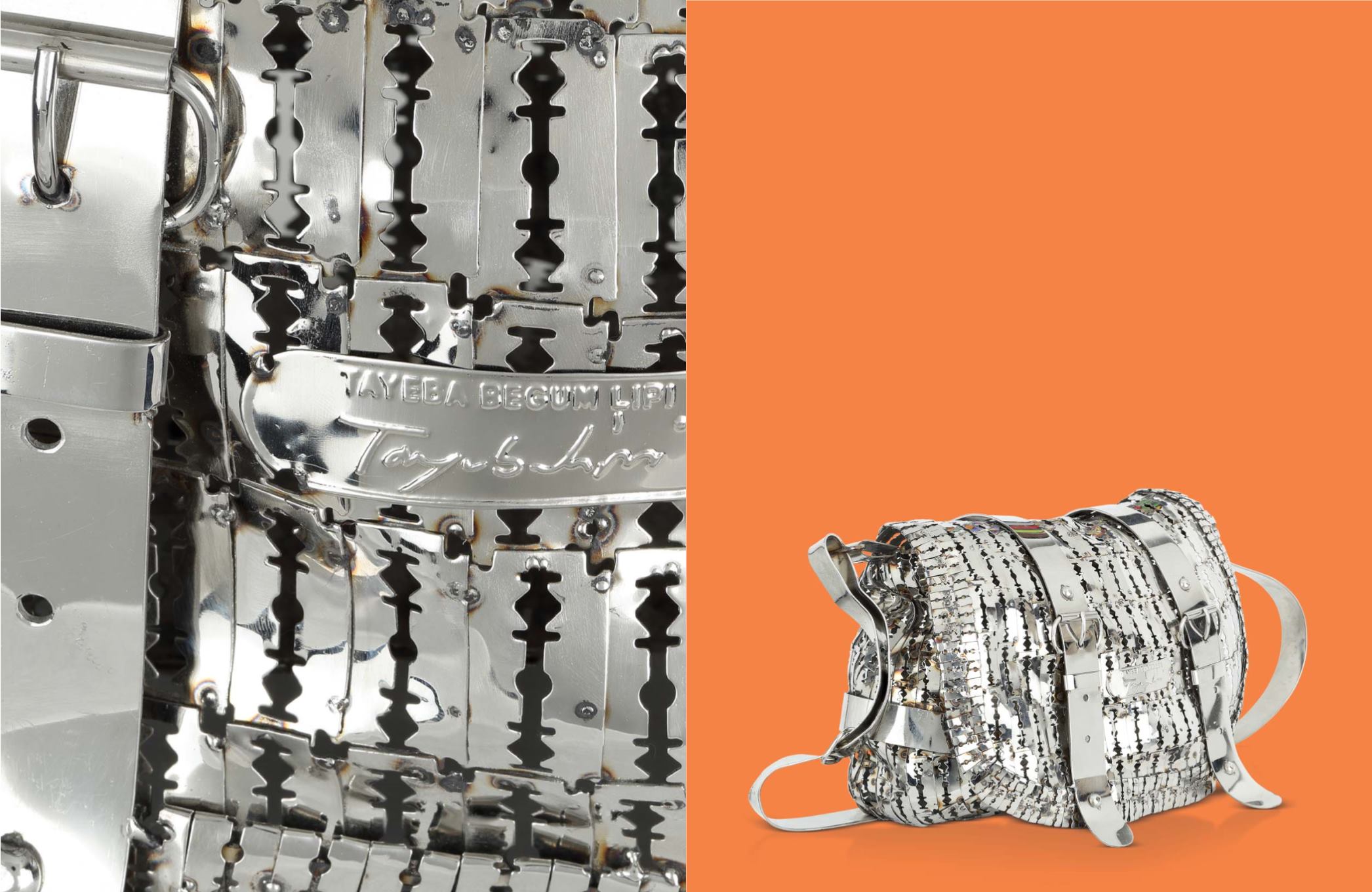

69
TAYEBA BEGUM LIPI
(b. 1969)
Untitled
Signed and inscribed 'TAYEBA BEGUM LIPI / Tayebalipi'
(at the centre)
Stainless steel
Height: 8.5 in (21.5 cm)
Width: 20 in (50.8 cm)
Depth: 9.5 in (24.1 cm)
$ 6,000 ‒ 8,000
Rs 3,84,000 ‒ 5,12,000
PROVENANCE:
Pi Art Gallery, London
Tayeba Begum Lipi is one of Bangladesh’s foremost
contemporary artists. Her practice includes installations,
paintings and sculpture, printmaking, and video as a
means to comment on the politics of gender and female
identity and representation. She is best known for her
sculptural works, which re‒create everyday objects
associated with women and their lives through unlikely
and provocative choice of materials such as metal and
safety pins. The present lot, presents the ubiquitous
women’s handbag or purse made not from the usual
soft leather or cloth but out of gleaming stainless steel
and razor blades to suggest notions of violence, and of
armour and steely confrontation. A note on the artist
on the Guggenheim website states, “Inspired by the
strong women of her childhood, Lipi’s work questions
the representation of women’s bodies and the history
of their social roles, particularly in Bangladesh, where
historical and religious expectations continue to
determine what is permissible.” (Tayeba Begum Lipi,
The Guggenheim, online) Lipi completed a Master of
Fine Arts in Drawing and Painting at the Faculty of Fine
Arts, University of Dhaka in 1993, and was awarded a
Grand Prize at the 11
th
Asian Art Biennale Bangladesh in
2003. She has been a presence on the global art stage
since 2012, when she was invited to participate in the
critically acclaimed Guggenheim Museum survey of
contemporary Southeast Asian art titled “No Country”,
and her work is now part of the museum’s permanent
collection. Her work continues to receive acclaim for
its constant innovation and for the conversation she
invokes on the roles and representations of women and
marginalised genders, a topic of increasing relevance not
just in Bangladesh but throughout the world.
80
81


















